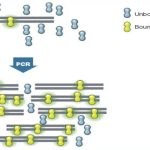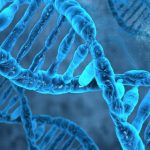Molecular beacons are structured probes that are highly sensitive, sequence specific, and are used for sequence detection in qPCR and in vitro studies.
Benefits of Using Molecular Beacons
- Probe preserved during the reaction
- Increased specificity
Add Locked Nucleic Acid to Your Probe
- Increase thermal stability and hybridization specificity
- Obtain greater accuracy in SNP detection, allele discrimination and in vitro quantification or detection
- Achieve easier and more sensitive probe designs for problematic target sequences
How Molecular Beacons Work
A Molecular beacon is a single-stranded bi-labeled fluorescent probe held in a hairpin-loop conformation (around 20 to 25 nt) by complementary stem sequences (around 4 to 6 nt) at both ends of the probe. The 5’ and 3’ ends of the probe contain a reporter and a quencher molecule, respectively. The loop is a single-stranded DNA sequence complementary to the target sequence. The proximity of the reporter and quencher causes the quenching of the natural fluorescence emission of the reporter. The structure and mechanism of a molecular beacon is shown below.

Molecular beacons hybridize to their specific target sequence causing the hairpin-loop structure to open and separate the 5’ end reporter from the 3’ end quencher. As the quencher is no longer in proximity to the reporter, fluorescence emission takes place. The measured fluorescence signal is directly proportional to the amount of target DNA.
Product Features
- Amounts: 1, 3, 5, and 10 OD
- Purification: HPLC
- Sequence Lengths: 15 – 40 bases
- Quality Control: 100% mass spectrometry
- Format: Supplied dry in amber tubes
- Custom formats available (normalizations, special plates, etc.)
Our probes are provided in a format to simplify your experimental planning.


Comments are closed